Ruger 77/17 – 17WSM – Review and Range Report
The much anticipated Ruger 77/17 chambered in the 17 Winchester Super Magnum has been released. We requested and received a rifle directly from Ruger about two weeks ago. We had the rifle shipped to Ohio, so our Review Editor, William Chambers, could put it through a full range test. The fine folks at Nikon offered to send us one of their PROSTAFF 5 4.5-18×40 riflescopes, with their custom XR Turret (more on that in a future review), to mount on the 77/17, so we took them up on the offer. It makes for a slick combo, ready for hunting varmints and even predators.
Next, we had to set the criteria for our testing. Typically, we test rifles with one, or two different loads, because we are eager to take it hunting. However, with the new Ruger, we knew that folks wanted to see the results of all the ammunition available. While preparing for this test, we acquired new boxes of each of the currently available 17WSM ammunition, which includes the following:
- Winchester HV – 20 grain VMax
- Winchester HE – 25 grain VMax
- American Eagle – 20 grain VMax
- Hornady – 20 grain VMax
All groups were to be 5-shots, at 100 yards, at targets with 1/2″ squares, giving us an idea of what this rifle would do with each branded load. We would also shoot multiple strings of shots through a chronograph, to determine whether, or not, the longer barrel would add to the velocity of each round. Last, but still important, we tested the trigger weight through a series of trigger pull tests with a trigger pull gauge.
Included with any new Ruger 77/17 rifle, is a set of their rings (that match to the bases that are integrated into their receivers), as well as a magazine. The Ruger 77/17 – 17WSM barrel has a 1:9″ twist and ships with a 6-round rotary, flush-mount, magazine, which is the same dependable design we all know and appreciate. As we reported previously, this rifle is an almost exact match to Ruger’s .17 Hornet rifle that was released in 2012. It has the feel of a centerfire rifle, and balances well, even with the 24″ barrel. The rifle we received had a nice stock, with some slight tiger striping, that matched well with the matte stainless receiver and barrel.
The rifle has the other options you will find on their other 77/17 bolt-action rifles, including the three-position safety and front and rear sling swivels. It weighs 7.5 pounds with no optics and has a length of pull of 13.50″.
While at the range, Will began the barrel break-in process that we at Varminter do with every new rifle we test. After the break-in, a string of each commercial load was shot through the chronograph to determine the velocity, extreme spread and standard deviation (population).
As you can see, the velocity did not increase with the slightly longer barrel (+2″). The velocities were very close to the numbers we had in previous reviews of other 17WSM chambered rifles (Savage B.MAG, Franklin Armory F17, etc).
Click Below to Watch the Video Portion of this Review:
Before doing any further shooting, Will did a series of trigger pull tests with a Lyman Electronic Digital Trigger Pull Gauge. The average weight of the factory trigger is 5 lbs – 7 ozs ! Although he felt that the trigger was smooth and broke crisp, it was agreed that the trigger pull is heavy for any rifle that will be used on smaller varmints and will affect groups. However, we chose to range test the rifle as is, with no changes. At some point, we may change over to one of the many aftermarket trigger kits available online. Jard, Volquartsen and a few other folks, make very nice trigger replacement kits that can bring your trigger weight down to a preferred 2 lbs. (Click Here to Buy the Jard 77/17 Trigger from Brownell’s)
With the chronograph and trigger pull results complete, Will began shooting for groups. One issue he ran into, was that the included scope rings were a bit high and did not allow for a solid cheek weld while shooting. This was remedied by placing a cloth over the buttstock while shooting the groups, then later a slip-on cheek pad/riser kit. We broke the groups up into three, 5-shot groups, at 100 yards. The groups were shot in succession, with cooling allowed in-between ammunition changes. The rifle was cleaned periodically, but only with wet and dry patches pulled through. The rifle was shot from a wood bench, on our Target Shooting, Inc. Model 500 rifle rest. This particular day in Northern Ohio was 65 degrees, partly cloudy, with light wind from the SW.
Below, we are listing the ammunition, along with a list of the three, 5-shot groups and the entire average.
Initially, our groups were not looking good, so we had to look at any possible reasons and try to remove the variables that can be controlled. Will restated his dislike of the heavy trigger, giving an example of a few times where he thought he left the safety on while pulling the trigger, only to have it break at about the time he was looking up to check! Will also was having problems with the scope being so high and not being able to get a good cheek weld, while also acquiring a full field of view in the scope. The remedy for this is lower scope rings, but we did not have that option at the time, so a cloth placed over the buttstock was the immediate solution, with the cheek riser coming later. Last, was range conditions. Whenever we shoot for accuracy testing, we record our hits on target downrange. Whether we end up using that footage depends on the type of video that will accompany the article. More often, then not, we review the video to see what was happening while we were shooting our groups. In this case, the wind was clearly affecting the target stand, with it moving backwards and forwards about an inch, when the wind hit. You can see the results in the animation I’ve included below, which is sped up to show you the wind movement on just one of the 5-shot groups.
As is true with many rimfire rifles, the more we shot it, and by the time we crossed the 200+ round mark, our groups tightened up to a consistent MOA hovering around 1.00 with the American Eagle branded ammunition. I’m not saying that all firearms will “tighten-up” after a certain number of rounds; but when you start with a rifle that shows good potential, find a load that works, and then continue to follow proper break-in and cleaning procedures, chances are, you will end up with a firearm that shoots well. Another factor would be the addition of a removable cheek pad, which helped Will have a slightly higher, but solid cheek weld, and a full view through the riflescope.
After remedying some of the issues listed above, Will went out for another quick range trip to see if the addition of a cheek riser/pad and a more stable platform for the target stand so it was not affected by any wind. He also gave the rifle a thorough cleaning and then dirtied it up a bit by shooting some fouler rounds. He then shot the following two groups in succession with the 20 grain American Eagle branded ammunition (each square is 1/2″):
These groups clearly show that this Ruger 77/17 has the potential to shoot consistent sub-MOA with the right ammo and some eventual work on lightening up the trigger. Will and I both believe that the trigger on this rifle is the one spot that is causing the most issues with accuracy. For example, the shot that is 3/4″ high on the second target was most likely caused by the heavy trigger. Removing that “flyer” would have brought the group down to below 1MOA. We have a 2lb. Jard trigger on the way from Brownell’s, so we will have a chance to see what this rifle can do with a much better trigger.
Ruger 77/17 – 17WSM Gallery:
First Groundhog Kill with the Ruger 17WSM:
Once Will knocked out the drudgery work at the range, he got a chance to take the Ruger 17WSM out for an evening groundhog hunt on one of his local farm permissions. The story Will relayed to me is pretty good, and if you watch our video review above, you will see the shot at the end of the video! He said that there were two groundhogs at this location. He was watching them from 550 yards away while watching some active holes that were closer (55-85 yards). He got sick of waiting, so he slowly worked his way across the open field until they saw him and took off. He quickly got set-up, sitting in some shade and not 10 minutes later this groundhog came back out. Suddenly, something must have spooked it, because it stood up to get a better look. Knowing this was his window to shoot, Will found it in the scope and took the shot at 127 yards, dropping the groundhog immediately. The 20 grain VMax hit the groundhog right where he was aiming, in the high chest area. The bullet liquified its insides, showing how well the little 20 grain bullet does when you push it at higher speeds! If you watch the video, you can see that the groundhog drops and doesn’t even twitch!
There is no doubt that the Ruger 77/17 in 17WSM was one of the most anticipated bolt-action rifle releases in 2015. Although the rifle is pricey in the $700 to $730 range, it is a well built rifle with everything you would expect from Ruger. The rifle functions flawlessly. There are no issues with the magazine, rounds chamber and empties eject with no problems. The trigger is crisp, but is so heavy that, in our opinion, it affects the rifle’s accuracy. We wish that a $700 to $730 rifle would come with a better trigger, because at some point, the factory trigger will need to be worked on, or replaced with one of the aftermarket triggers available (listed above). However, a $95 dollar trigger investment in this rifle is a must and does not hurt so bad when you consider the years of enjoyment to follow!
Will’s Final Thoughts:
Being that I’m more of an AR guy, I don’t have a lot of experience with bolt actions; save my Grandfather’s old single-shot .22LR and a couple of Remington 700s that I’ve owned over the years. Right off the bat I was very impressed with the quality of the Ruger 77/17. The stock is absolutely beautiful, and the action and barrel look great with the matte stainless finish. Once I got the scope mounted and headed to the range, my only real complaint about the rifle was the trigger. It is HEAVY, in fact is probably one of the heaviest single-stage triggers that I’ve ever felt. However, after shooting hundreds of rounds with the rifle, I started to get used to the pull, and was able to post up some good results. Also, when I took the above groundhog, I didn’t even notice the heavy trigger. All in all, the Ruger 77/17 is a solid rifle, and I can see the appeal of this type of setup for varmint hunters. Although it’s a bit heavy when compared to other bolt actions I’ve used (like Ruger’s American rifle), the heavier barrel profile aids in the rifle’s accuracy, and helps it handle heat better; which is important for those who plan to use the rifle for varmints, like prairie dogs for instance, where you may be shooting at several targets in quick succession. I’ll end by saying this, I liked the Ruger 77/17 so much, I plan to buy one myself!
—–
We will have much more on this rifle, including a full video hunt report on all types of varmints here in the west, coming soon!
- Podcast with Soul Seekers Nation From the 2025 SHOT Show - February 17, 2025
- Complete Overview of the .17-5.56 KAK Cartridge by KAK Industry - July 21, 2024
- AGM Global Announces New and Upgraded Optics at the 2024 SHOT Show - February 1, 2024

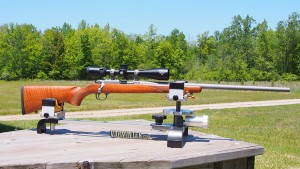


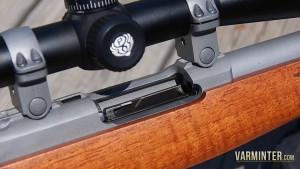
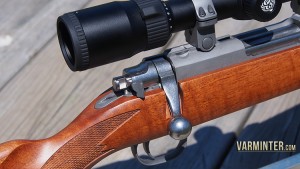
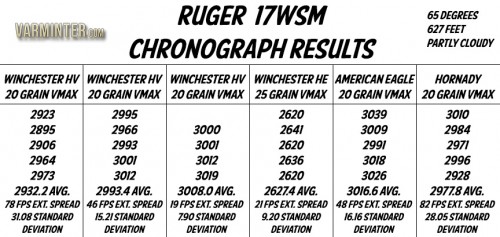

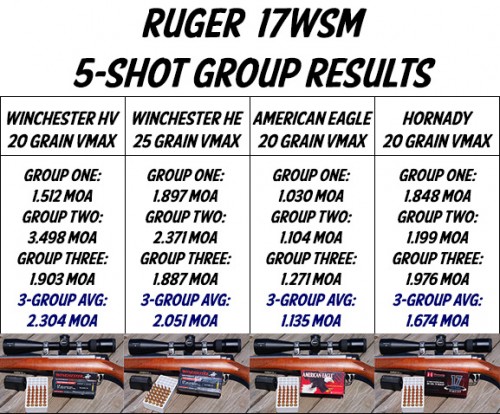


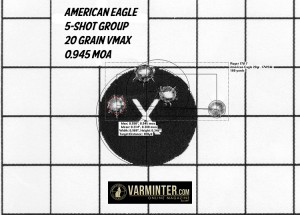
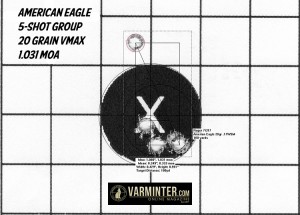
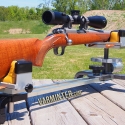
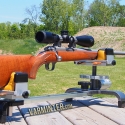
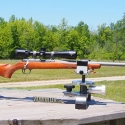
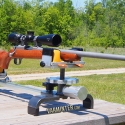
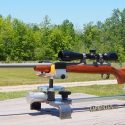
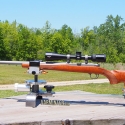
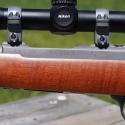
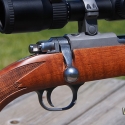
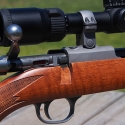
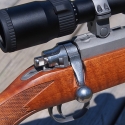
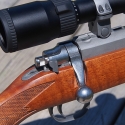
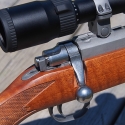
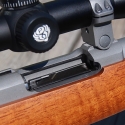
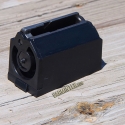
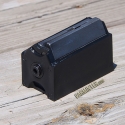
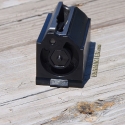
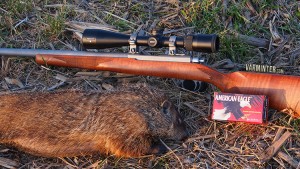
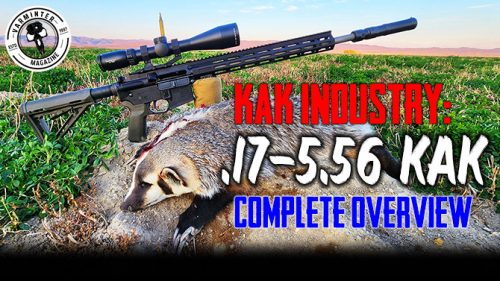

[…] pigs in his area. http://ruger.com/products/rotaryMaga…17/models.html A review is here. http://www.varminter.com/ruger-7717-…-range-report/ Al __________________ Garden View Apiaries where the view is as sweet as the honey. Member […]
[…] Update 06/02/2015 – Our Ruger 17WSM Review has been published: Ruger 77/17 – 17WSM Review and Range Report […]
[…] original review article on the new Ruger 77/17 in 17WSM received a massive response, but after all was said and done, the […]